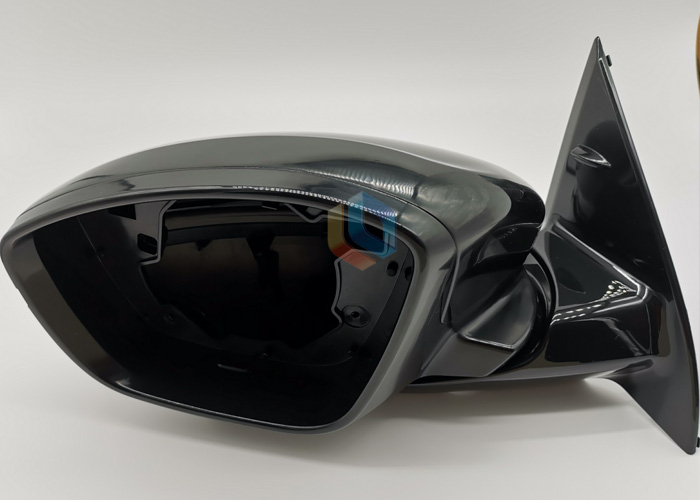

Bai Shui Chao
Email: dl-bsc@dlsjmj.com
Telephones: 13962423309
Mark Yen
Email: dl-mark@dlsjmj.com
Telephones: 17312472090
TEL:0512-57170368
FAX:0512-57170328
HTTP://www.jiamengba.net
Add: No.218 South Yucheng Road Kunshan City Jiangsu Province China.
Precision injection moulding differs from ordinary injection moulding in the word precision, i.e. higher requirements on plastic products, smaller tolerances, more beautiful appearance, etc. Today Daliang will talk with you about the main factors affecting precision injection moulding.

Overview of Precision Injection Molding
The basis of judging precision injection molding is the precision of injection products, that is, the dimensional tolerance, shape tolerance and surface roughness of products. There are many related conditions for precision injection moulding, and the most essential factors are plastic materials, injection moulds, injection moulding technology and injection equipment. In the design of plastic products, engineering plastics should be selected first, and those materials with high mechanical properties, dimensional stability, good creep resistance and environmental stress cracking resistance must be selected for engineering plastics which can be used for precise injection moulding. Secondly, the suitable injection moulding machine should be selected according to the plastic material chosen, the dimensional accuracy of finished products, the weight of parts, the quality requirements and the anticipated die structure. In the process of processing, the factors affecting precision injection products mainly come from the accuracy of the mold, injection shrinkage, and the range of environmental temperature and humidity of the products.
Effect of Mould Accuracy on Precision Injection Molding
In precision injection moulding, mould is one of the keys to obtain precise plastic products that meet the quality requirements. The precision injection moulds should meet the requirements of product size, precision and shape. However, even if the precision and size of the mould are the same, the actual size of the plastic products moulded by the mould will vary with the shrinkage. Therefore, it is very important to effectively control the shrinkage of plastic products in precision injection technology.
Factors Affecting Injection Shrinkage
The shrinkage rate of plastic products is directly affected by the design of the mould. Because the cavity size of the mould is calculated by the size of the plastic products plus the estimated shrinkage rate, and the shrinkage rate is recommended by the plastic manufacturer or the engineering plastics manual within a range of values. It is not only with the gate form and gate position of the mould. Placement is related to distribution, and also to crystallization orientation (anisotropy) of Engineering plastics, shape and size of plastics products, distance and locations from gate. The main factors affecting shrinkage of plastics are heat shrinkage, phase transformation shrinkage, orientation shrinkage, compression shrinkage and elastic recovery, which are related to the forming or operating conditions of precision injection moulding products. Therefore, the relationship between these factors and injection conditions and their apparent factors, such as injection pressure and cavity pressure and filling speed, injection melt temperature and mould temperature, die structure and gate form and distribution, as well as gate cross-section area, product wall thickness and reinforcement filler content in plastic materials, must be considered in the design of injection moulds. Influences of quantity, crystallinity and orientation of plastic materials. The influence of the above factors also varies with different plastic materials, other forming conditions such as temperature, humidity, continuous crystallization, internal stress after moulding and the change of injection moulding machine.
Effects of Environmental Temperature and Humidity on Products
Because the injection molding process is the process from solid (powder or particle) to liquid (melt) and to solid (product). From granular material to melt, and then from melt to product, the interaction of temperature field, stress field, flow field and density field is needed. Under the combined action of these fields, different plastics (thermosetting or thermoplasticity, crystalline or amorphous, reinforced or non-reinforced, etc.) have different polymer structure and rheological properties. This is the case. All the factors affecting the above "field" will certainly affect the physical and mechanical properties, size, shape, accuracy and appearance quality of plastic products.
Summary
In this way, the intrinsic relationship between process factors and polymer properties, structural morphology and plastic products will be shown through plastic products. It is of great significance to analyze and clarify these internal linkages for the rational formulation of injection moulding process, the rational design and manufacture of moulds according to drawings, and even the rational selection of injection moulding equipment. Precision injection moulding is different from ordinary injection moulding in terms of injection pressure and injection rate. High pressure or ultra-high pressure injection and high speed injection are often used in precision injection moulding to obtain smaller shrinkage. In view of the above reasons, the following points should be taken into account in designing precision injection moulds besides the design elements of general moulds: 1) proper dimension tolerance of moulds; 2) prevention of forming shrinkage error; 3) prevention of injection moulding deformation; 4) prevention of demoulding deformation; and 5) minimization of manufacturing error of moulds. Prevent the error of die accuracy Maintain the accuracy of die.